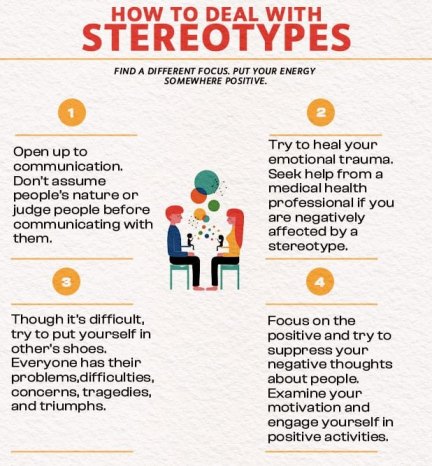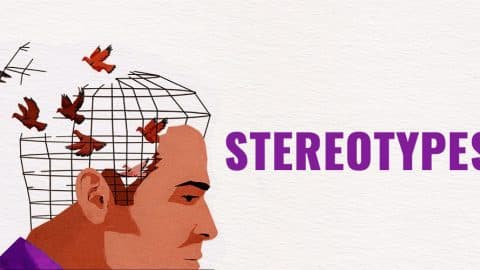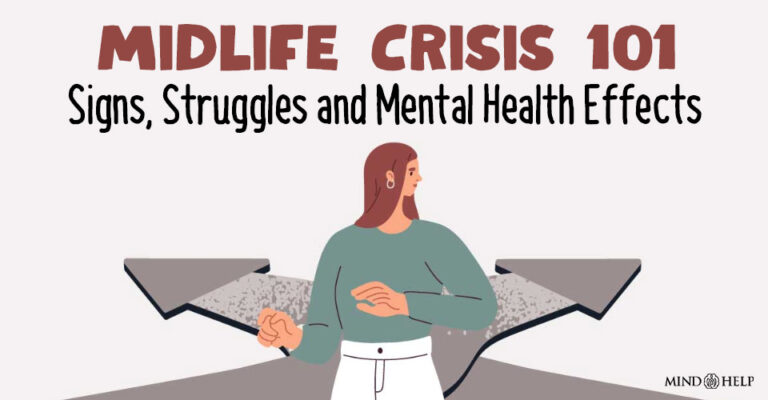Stereotypes refer to widely held generalized beliefs that many people have about certain personal attributes of a particular group or class. Though prejudice and stereotyping are not similar, they are both based on prior assumptions.
What Are Stereotypes?
Stereotypes are certain oversimplified, essentialist, fixed, and generalized preconceptions about the personal characteristics of a specific group of people. A 2014 study describes stereotype as “A generalized view or preconception about attributes or characteristics that are or ought to be possessed by members of a particular social group or the roles that are or should be performed by members of a particular social group.” Prejudice is often confused with these essentialist beliefs while prejudice 1 Fiske S. T. (2017). Prejudices in Cultural Contexts: Shared Stereotypes (Gender, Age) Versus Variable Stereotypes (Race, Ethnicity, Religion). Perspectives on psychological science : a journal of the Association for Psychological Science, 12(5), 791–799. https://doi.org/10.1177/1745691617708204 is just a form of stereotyping. With this practice, people assume that a specific person or a group has a whole range of similar attributes and abilities. Stereotypes exist within a broad range of social groups and communities, and those beliefs largely depend on particular situations. Stereotyping can happen based on different grounds, including:
- Nationality
- Age
- Race and ethnicity
- Sex
- Sexual orientation
- Socioeconomic status
- Language
- Physical and psychological disability
Stereotyping is considered to be a cognitive process that allows people to associate certain characteristics with a group. A 1996 research paper 2 Hilton, J. L., & von Hippel, W. (1996). Stereotypes. Annual review of psychology, 47, 237–271. https://doi.org/10.1146/annurev.psych.47.1.237 suggests that some cognitive and motivational factors positively contribute to the formation, application, maintenance, and change of stereotypical beliefs. However, this practice can also be served to justify an affective reaction toward people from other groups. These beliefs are often strongly immersed within societal institutions and wider cultures. Almost every culture has several significant stereotypical beliefs. Some stereotypical beliefs were created as an outcome of certain economic, social, and political circumstances. Such overgeneralized beliefs are extremely familiar during early childhood that influences how people interact with each other. Research 3 Puddifoot K. (2019). Stereotyping Patients. Journal of social philosophy, 50(1), 69–90. https://doi.org/10.1111/josp.12269 says that it allows people to respond rapidly to certain situations only because they may have had a similar experience before. Meanwhile, such beliefs make people ignore the differences of individuals and develop extreme generalizations. The oversimplification makes people ignore the complexity and differences found in individuals. Stereotypical beliefs reduce the amount of our thinking process when we meet a new person or character. The way people simplify their social world largely depends on how they use those stereotypes.
Understanding Stereotypes
Stereotypical beliefs misrepresent certain groups or communities they seek to describe. Most of such beliefs lead to social categorization, followed by some prejudiced attitudes and making ‘in-group’ and ‘out-group’ concepts. According to a 2009 research paper 4 Wout, D. A., Shih, M. J., Jackson, J. S., & Sellers, R. M. (2009). Targets as perceivers: how people determine when they will be negatively stereotyped. Journal of personality and social psychology, 96(2), 349–362. https://doi.org/10.1037/a0012880 , most stereotypes are learned. Several social influences explicitly and implicitly participate in reinforcing stereotypical beliefs. It is not only limited to friends, family, neighbors, teachers, peer groups but also other larger societal influences. Studies 5 Molina, K. M., & James, D. (2016). Discrimination, internalized racism, and depression: A comparative study of African American and Afro-Caribbean adults in the US. Group processes & intergroup relations : GPIR, 19(4), 439–461. https://doi.org/10.1177/1368430216641304 have shown that media plays an extremely crucial role in creating, promoting, and sustaining stereotype assumptions of several social groups. These studies show that media has a large influence on the mass through the representations it presents. Media often underrepresents some groups and the images that exist in the media are considered disproportionately stereotypical. Such media representations often end up affecting people’s stereotype endorsement, especially when people are not in close contact with that particular group.
Why Do People Stereotype
A 2011 research paper 6 Gigerenzer, G., & Gaissmaier, W. (2011). Heuristic decision making. Annual review of psychology, 62, 451–482. https://doi.org/10.1146/annurev-psych-120709-145346 says that human brain shortcuts are called “heuristics” in psychology. These shortcuts help our brains navigate the world. “Heuristics are efficient cognitive processes, conscious or unconscious, that ignore part of the information.”, the study explains. It claims that heuristics allow people to make potentially damaging assumptions about others. To understand people, one needs to concentrate on the individual characteristics and actions and not their group identity. Heuristics prevent the human brain from focusing on people’s individual behaviors and other attributes. Another 2018 study 7 Liberman, Z., Woodward, A. L., & Kinzler, K. D. (2017). The Origins of Social Categorization. Trends in cognitive sciences, 21(7), 556–568. https://doi.org/10.1016/j.tics.2017.04.004 claims that natural oversimplifications and overcategorizations are the two main reasons behind stereotypical assumptions. This study explains that people are habituated to thinking in terms of categories that they create from their experiences. Those categories oversimplify every phenomenon and hinder people’s ability to make sense of things. This condition often leads to developing stereotypes.
Types Of Stereotypes

Some common stereotypical beliefs include the following types-
1. Racial stereotypes
One of the most commonly observed stereotypical beliefs is about different races or ethnicities. Such beliefs exist in almost every race, culture, or ethnic group. For example, one of these stereotypical beliefs indicates that all black people are good at sports or are great athletes.
2. Gender stereotypes
Stereotypical beliefs regarding the difference between men and women are quite common in every type of society. Such beliefs reflect normative notions of men, women, masculinities, and femininities. Similar to all other aspects of gender, the elements that constitute masculinity and femininity largely depend upon various cultures and different historical periods. Some of the examples include:
- Men are stronger than women and can do all types of work
- Women are not as smart as men
- Women are not good at sports
- All men are messy, clumsy, and unclean
3. Cultural stereotypes
Stereotypical beliefs also exist across different cultures of different countries. Some of the examples are:
- All white Americans are suffering from obesity, they are lazy and dim-witted
- All Arabs and Muslims are associated with some kind of terrorism
- Mexican people come into America illegally
- All Jews are greedy
- All Asians like to eat rice and drive slow
- Irish people drink a lot and like to eat potatoes
4. Sexual stereotypes
There are also certain significant stereotypical beliefs regarding people’s sexual orientations. For example, any feminine man is gay and any masculine woman is a lesbian. Another example is that homosexuality is an abomination, immoral, and wrong.
5. Individual stereotypes
This kind of stereotype revolves around the grouping of individuals. Such stereotypical beliefs include:
- All politicians are only concerned about their own gain or benefit
- Women are most concerned about their physical appearance
- People with blonde hair are unintelligent
- All librarians wear thick glasses, are old, and have a perpetual frown on their faces
- Children don’t like healthy foods
- Only anorexic women can become models
- Elder people
Stereotype Threats
A stereotype threat is the risk or harmful impact of negative stereotypes about a person’s racial, ethnic, cultural, and gender groups. Stereotypical beliefs that can harm or negatively affect an individual’s physical and psychological well-being are known as negative stereotypes. In some instances, certain stereotypical beliefs can be correct. But constantly putting someone down based on one’s perceived assumptions can destroy the targeted person’s self-esteem and stop them from succeeding in life. A 2016 research paper 8 Pennington, C. R., Heim, D., Levy, A. R., & Larkin, D. T. (2016). Twenty Years of Stereotype Threat Research: A Review of Psychological Mediators. PloS one, 11(1), e0146487. https://doi.org/10.1371/journal.pone.0146487 suggests that such beliefs can have a paradoxical effect on someone’s performances and are cued by some mere recognition. According to a 2008 study 9 Schmader, T., Johns, M., & Forbes, C. (2008). An integrated process model of stereotype threat effects on performance. Psychological review, 115(2), 336–356. https://doi.org/10.1037/0033-295X.115.2.336 , a stereotypical threat can disrupt one’s performance through three distinct mechanisms:
- It develops a psychological stress response that impairs the prefrontal processing
- It emerges a tendency to actively monitor performance
- It efforts to suppress some negative thoughts and emotions in the service of self-regulation.
A person can experience the threat without believing the stereotype. Such negative stereotypes often lead to bullying at a young age as it encourages bullying behaviors that many children carry into their adulthood.
Read More About Bullying Here
How To Deal With Stereotypes

It is quite difficult to change people’s way of thinking. But there are some beneficial ways you can adopt to deal with certain stereotypes if you are experiencing any. If you don’t believe in stereotypical beliefs but are affected by them, the following ways will help you to deal with such situations.
- We will get hurt by the negative things people say about us. Try to build up your own sense of self and self-confidence.
- Open up to communication. Don’t assume people’s nature or judge people before communicating with them.
- Demand respect from the other person you are communicating with. Do not let them treat you poorly. Create a line of communication with that person and let them know that their behavior is unacceptable.
- Try to heal your emotional trauma. Seek help from a medical health professional if you are negatively affected by a stereotype.
- Focus on the positive and try to suppress your negative thoughts about people. Examine your motivation and engage yourself in positive activities.
- Find a different focus. Put your energy somewhere positive.
- Though it’s difficult, try to put yourself in other’s shoes. Everyone has their problems, difficulties, concerns, tragedies, and triumphs.
Eliminate Stereotypical Beliefs
Stereotypical beliefs can affect people’s physical and psychological health. Every culture, race, and ethnicity has its different stereotypical beliefs. One needs to stop assuming based on normative or stereotypical notions. It is important to find out and understand different people’s nature and practices across classes, regions, educational backgrounds, etc. Stereotypical beliefs and assumptions can negatively affect people’s relationships while stereotypical threats can hamper an individual’s performance in every domain. However, we need to focus on positivity and engage in beneficial activities to eliminate negative stereotypes.
Stereotypes At A Glance
- Stereotypes are certain oversimplified and overgeneralized beliefs or assumptions that people have about some personal characteristics of a specific group.
- Stereotypical assumptions make one rapidly respond to a certain situation as well as ignore the diversity in different individuals.
- Human brain shortcuts, known as heuristics, allow us to make potentially damaging assumptions about others and prevent us from focusing on people’s individual characteristics.
- Some of the commonly observed stereotypes include racial profiling, gender profiling, cultural profiling, and sexual profiling.
- Negative stereotyping often develop stereotype threats among individuals and can adversely affect their performances, physical and psychological well-being.















